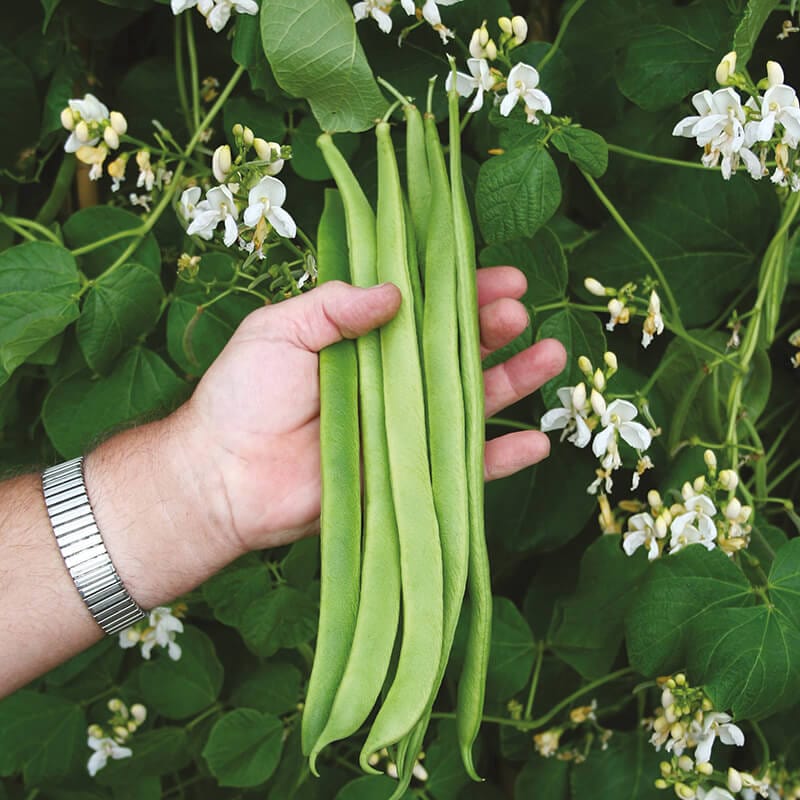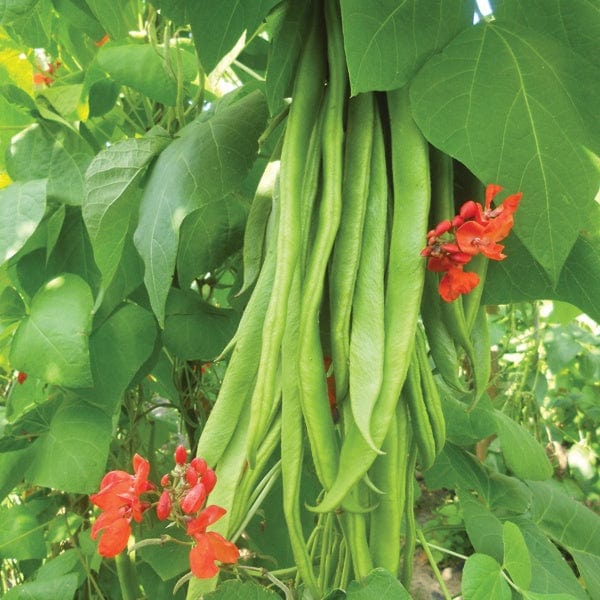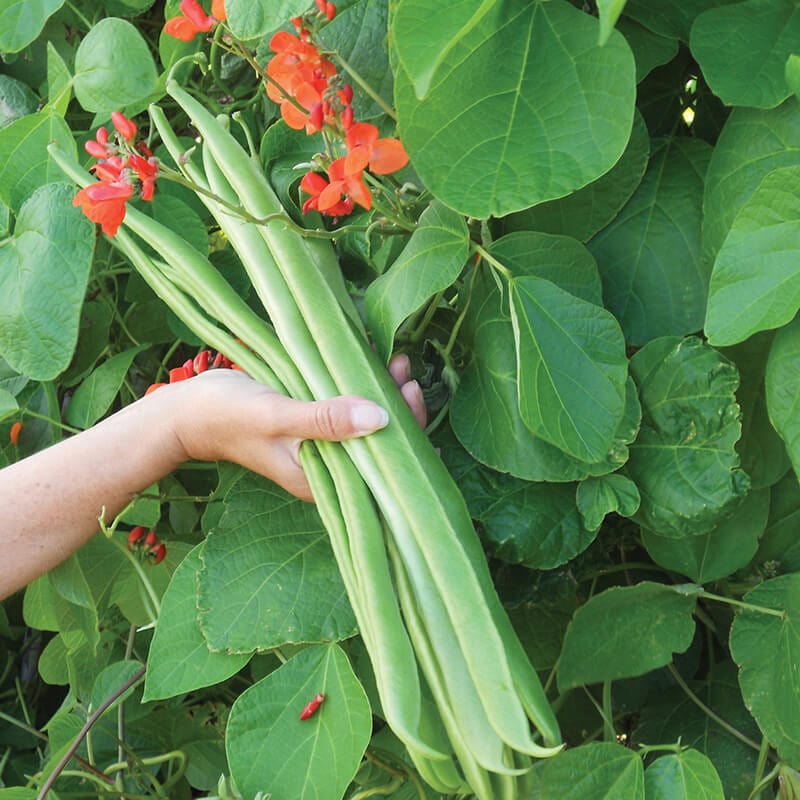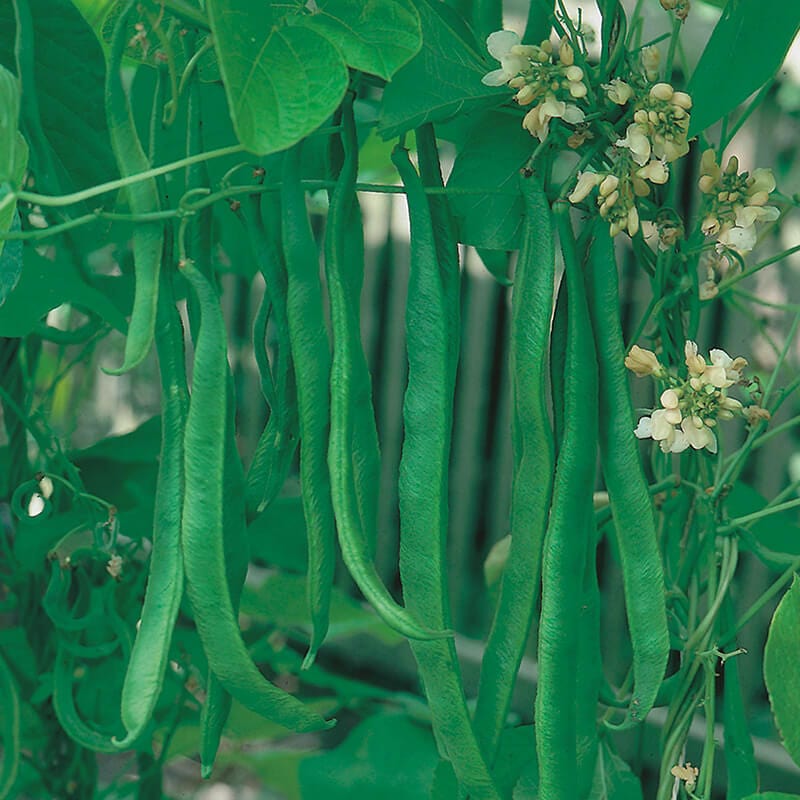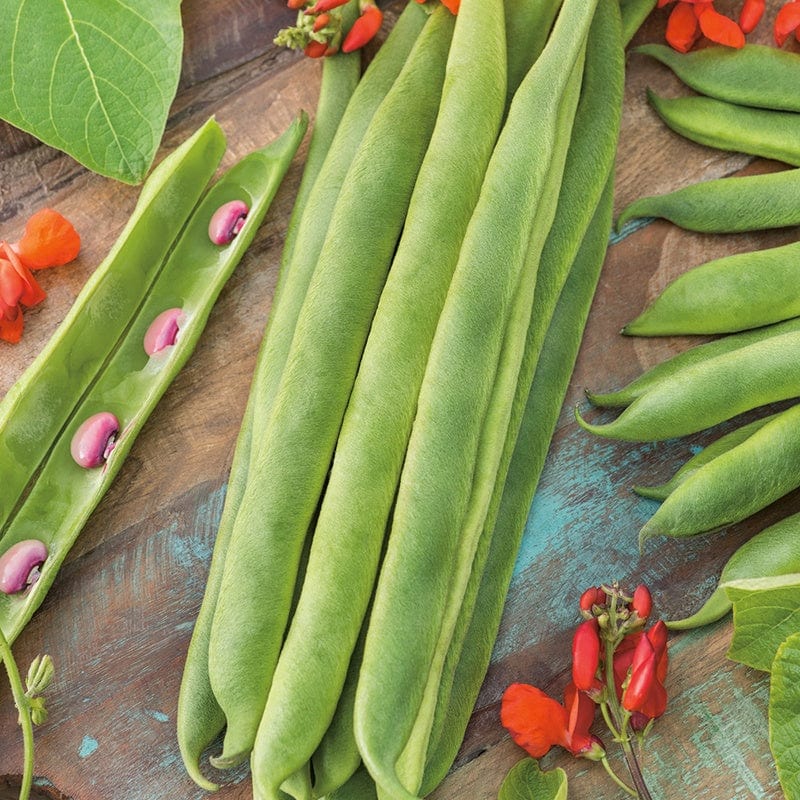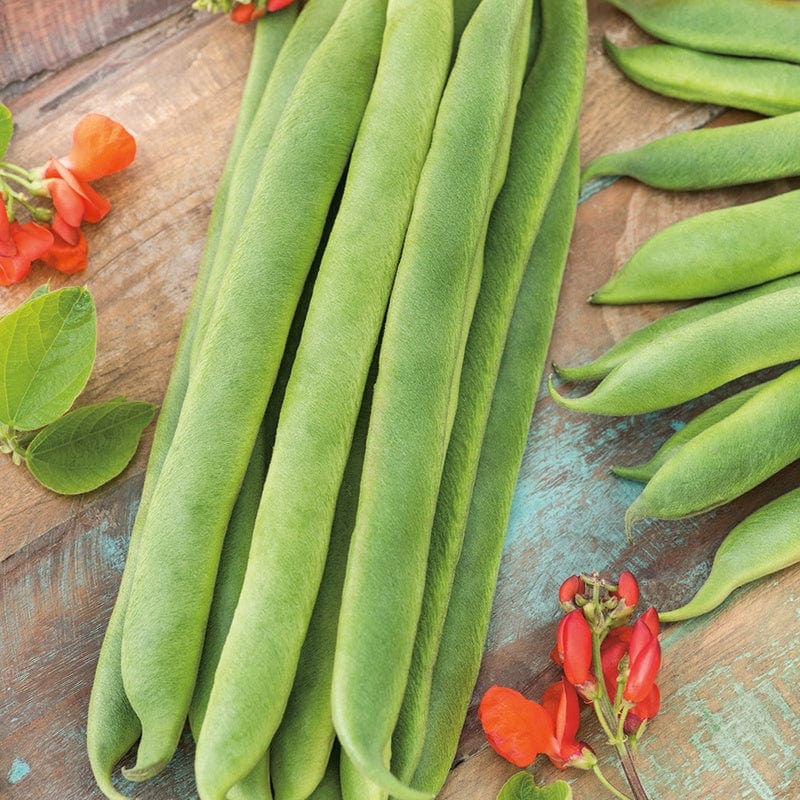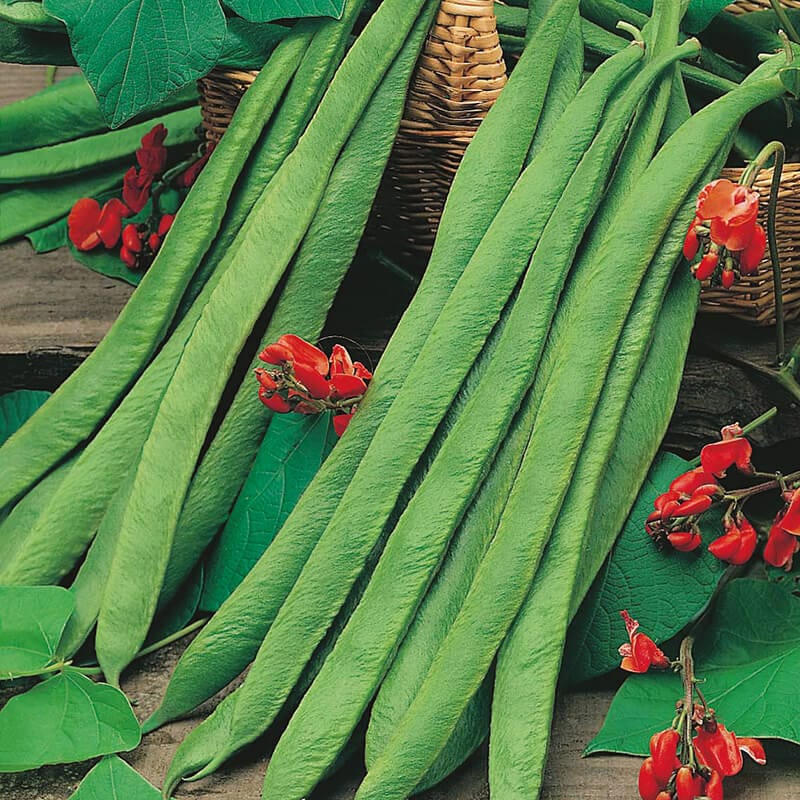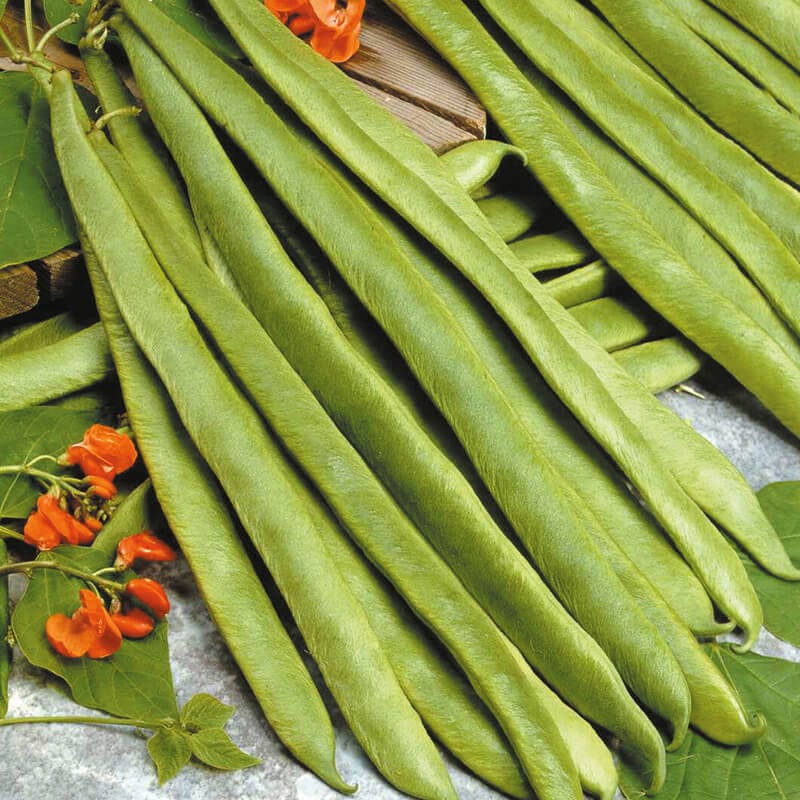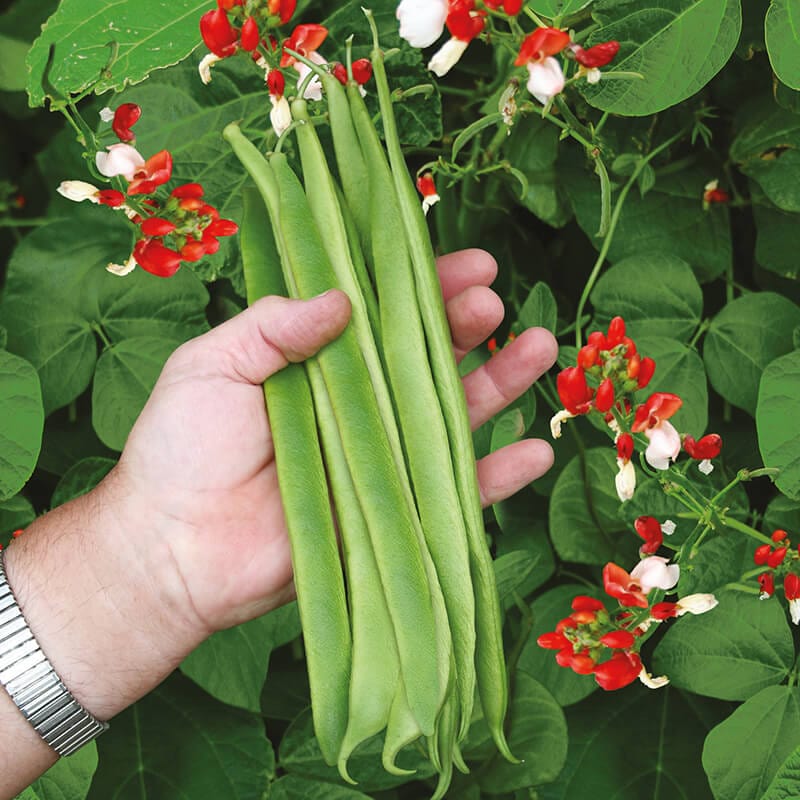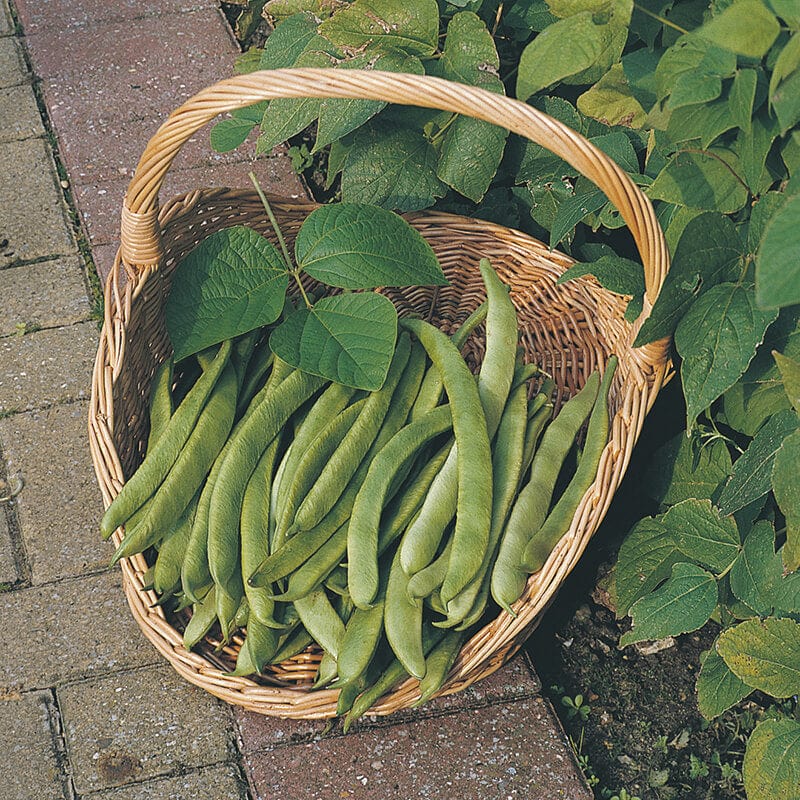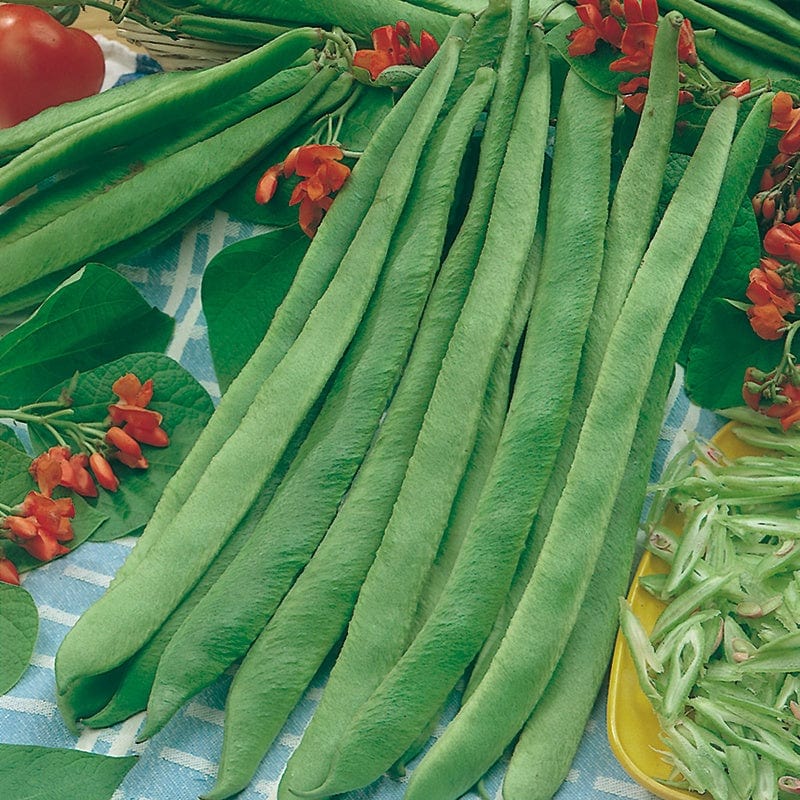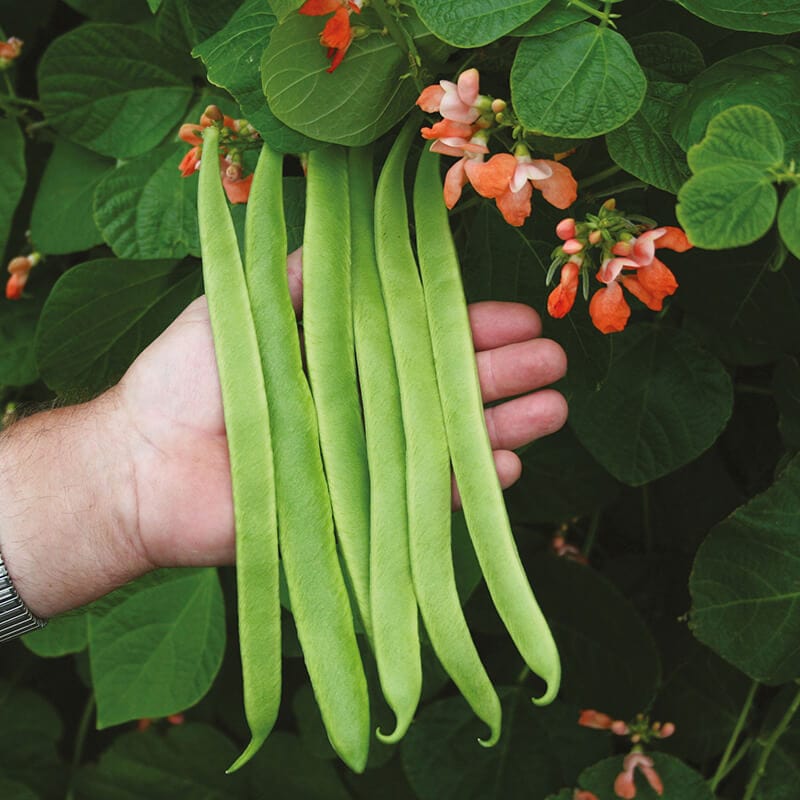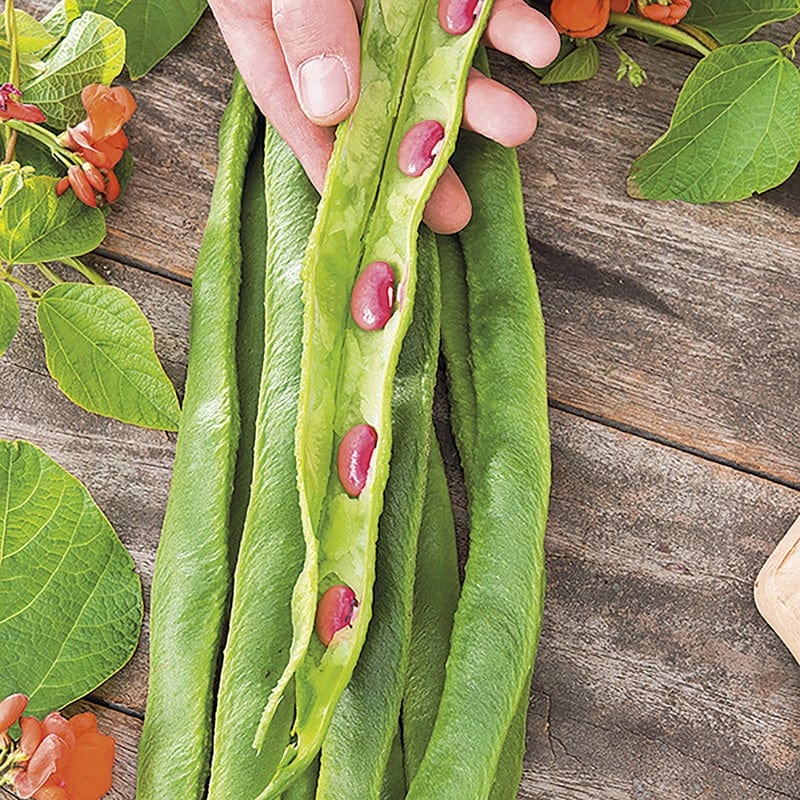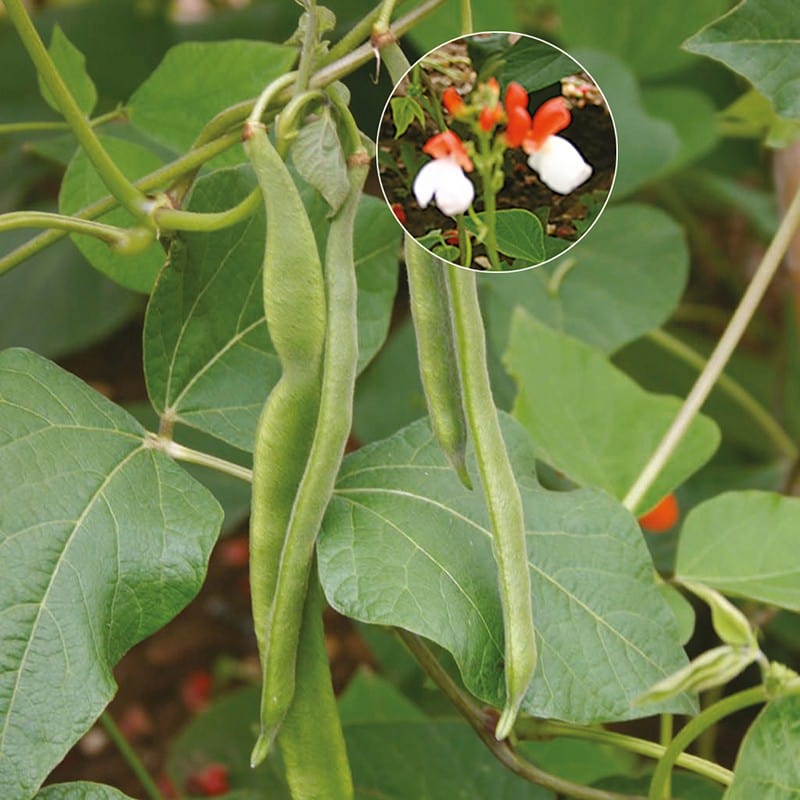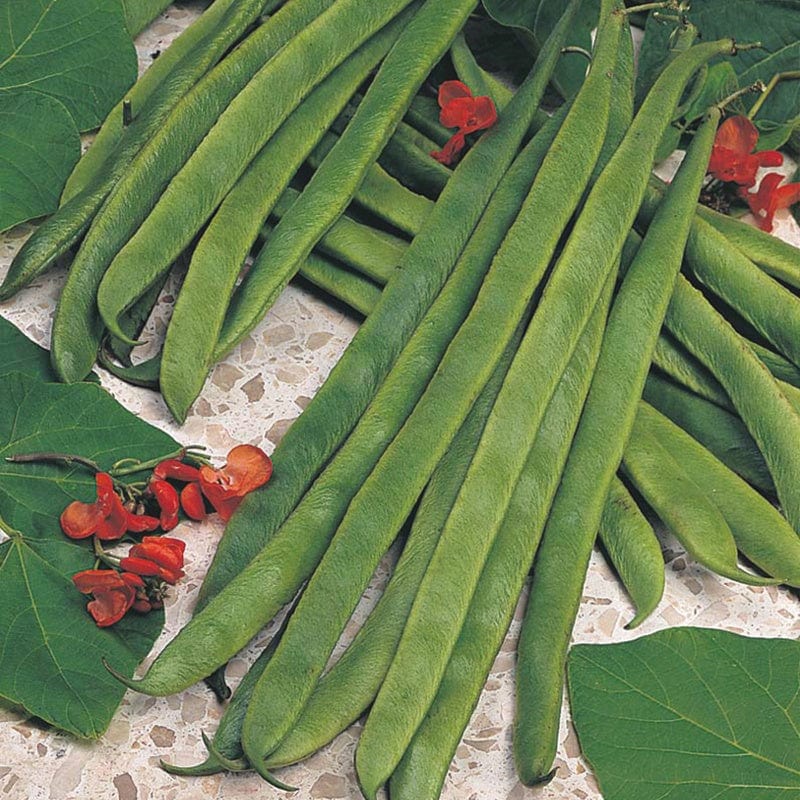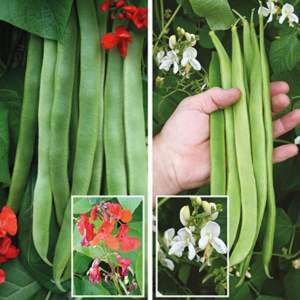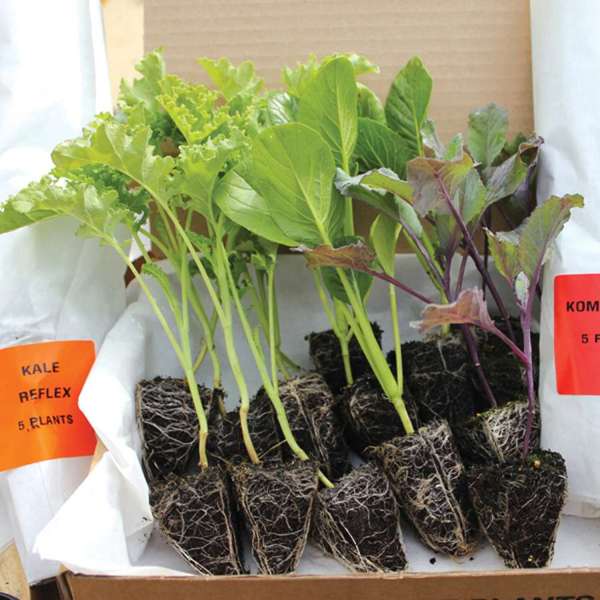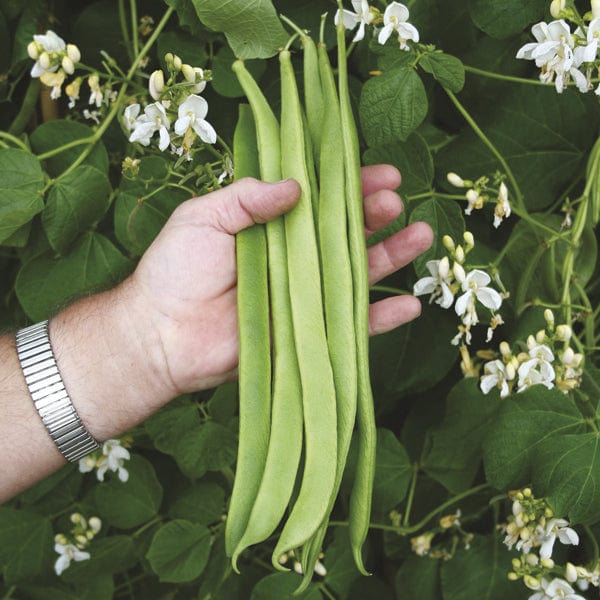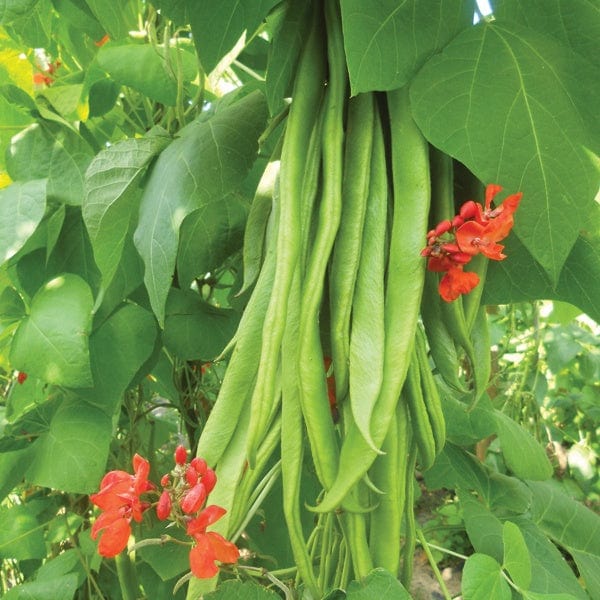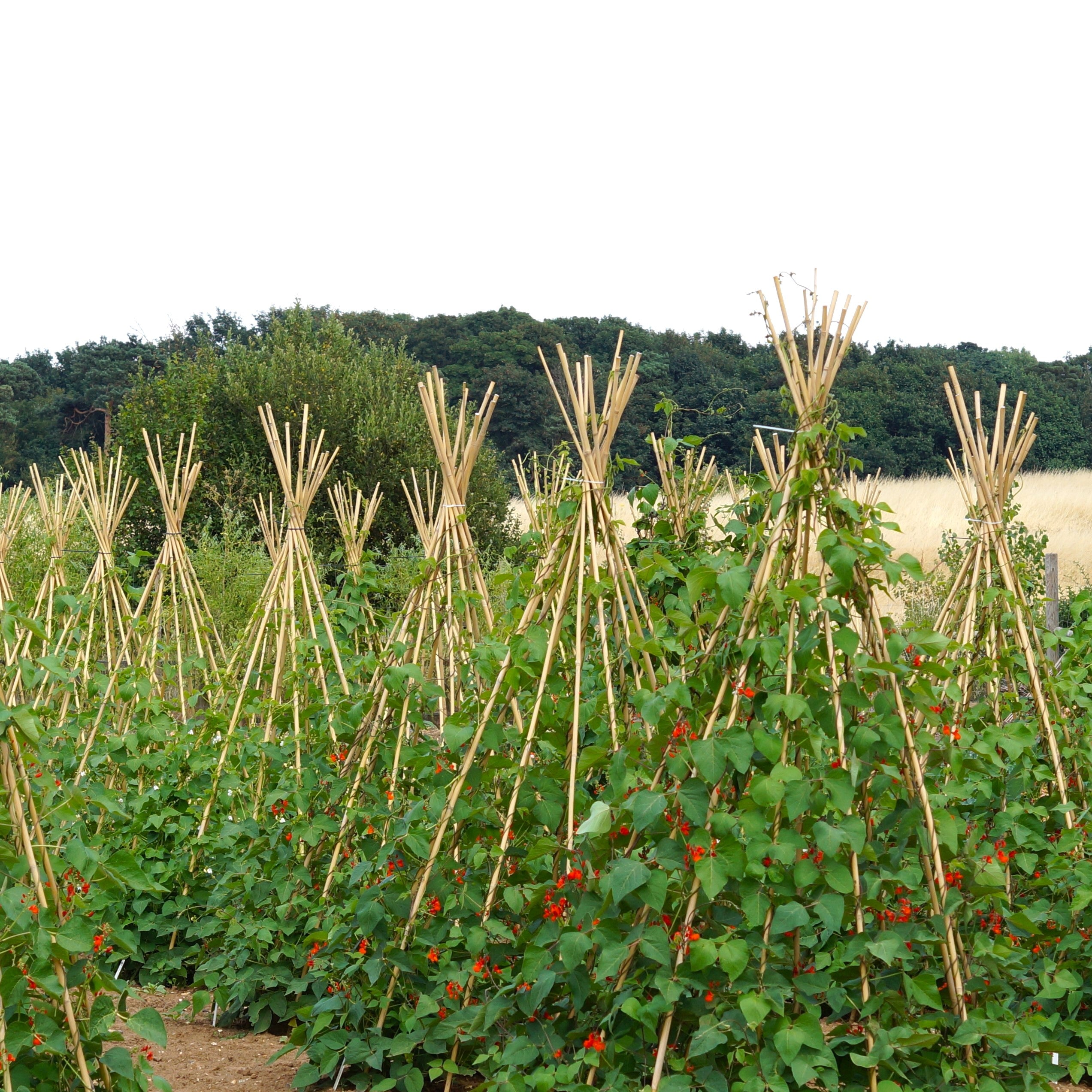
Runner Bean Seeds
Runner bean seeds (Phaseolus coccineus) are a favourite among British gardeners, widely grown both for their crisp, delicious pods and their beautiful flowers. Also known as ‘scarlet runner’ and ‘Dutch case-knife bean’, these bean seeds have been grown for food for more than 2,000 years, and originated in the tropical uplands of Central America. It’s believed that they were brought to the British Isles by John Tradescant, gardener to Charles I.
A much-loved vegetable garden classic, runner beans are perfectly suited to the UK climate and crop over a long period of time, producing excellent yields. At D.T. Brown, we stock many popular varieties of runner bean seeds, like Moonlight AGM, Red Flowered Ladi Di, and many more. Browse our complete collection below.
Filters
17 products
-
12 garden ready plants LATE Code: 58168
-
12 garden ready plants EARLY Code: 58167
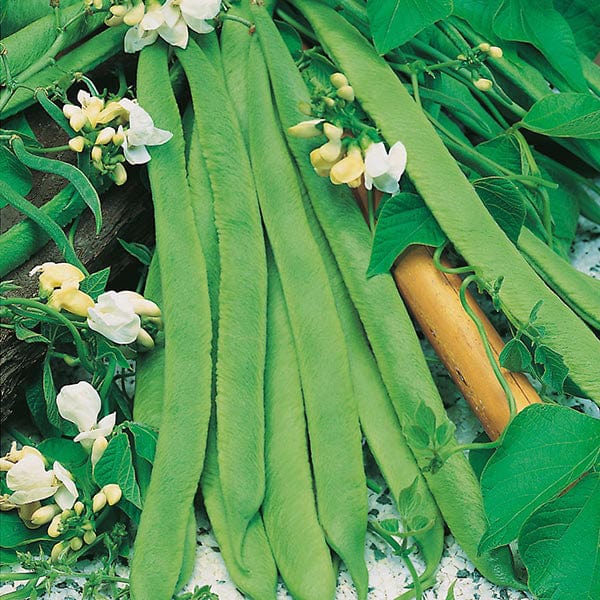
How to grow Runner Beans
Sow runner bean seeds indoors from mid-April to May or directly outdoors from mid-May to June, once the soil has warmed and all risk of frost has passed. While they perform well in a cooler climate, they are not frost-hardy. Indoor sowing allows for an earlier start to the growing season, giving your runner bean plants a longer period to mature. Alternatively, you can skip the germination stage with our range of established runner bean plants.
How to Grow Runner Bean Seeds
For indoor growing, sow runner bean seeds individually in small pots filled with good-quality compost. Keep the pots in a warm, bright spot and water regularly, ensuring the compost remains moist but not waterlogged. Harden off indoor-grown plants gradually before transplanting outside.
When sowing outdoors, plant seeds 5cm (2in) deep in well-drained soil, spaced 15cm (6in) apart, with rows 50cm (20in) apart. Provide sturdy supports, such as canes or a trellis, for the plants to climb. Water regularly, particularly during dry spells, and apply a mulch to retain moisture. Pinch out the growing tips once the plants reach the top of their supports to encourage bushier growth and more flowers.
Order Your Runner Bean Seeds Today
At D.T. Brown, we understand that experienced gardeners want reliable, high-quality vegetable seeds that deliver excellent results. Our runner bean seeds are chosen for their superb germination rates, vigorous growth and heavy crops of flavourful pods, giving you a harvest you can be proud of.
Order your runner bean seeds today with D.T. Brown. With our 100% satisfaction guarantee, you can trust that your garden is in good hands. Shop now and enjoy delivery from just £2.45 on seed-only orders.






